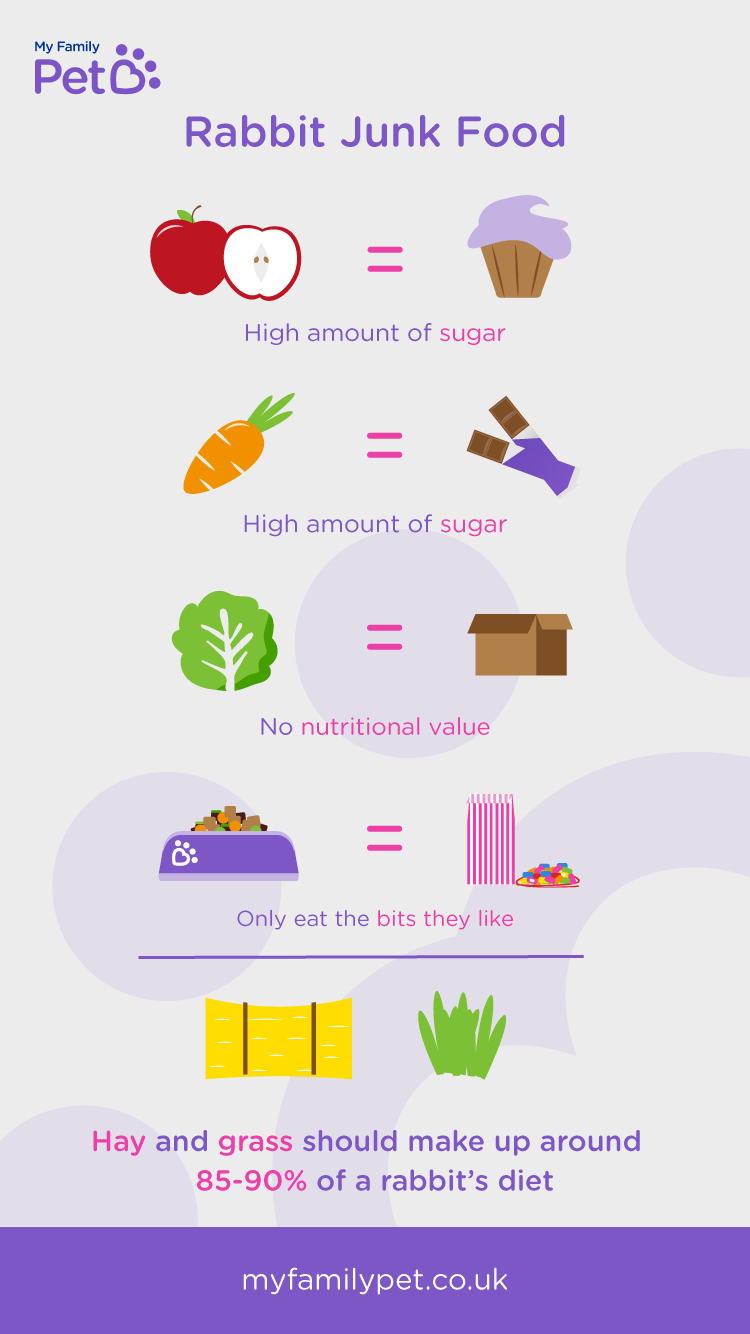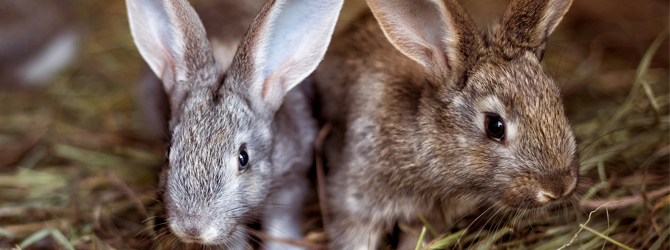Rabbit Diet Guide: What Should Pet Bunnies Eat?
First Published: 05/06/2019
Last Updated: 24/01/2024
Let’s take a closer look at our bunnies’ dietary requirements: what they need often in their diet and what should be reserved for treats.
Wild rabbits – what can we learn?
When thinking about what your rabbit needs to be eating, ask yourself this… what do wild rabbits eat
The answer: grass. Grass, grass and more grass!
This is how it should be for rabbits. In fact, grass or hay should make up a whopping 85%-90% of a rabbit’s diet.
Why is hay/grass so important?
When a rabbit eats, the food passes through their stomach and small intestine and is then divided into digestible and indigestible fibre. Indigestible fibre is important as it helps the rabbit’s gut motion; once it passes through their system, they excrete it in the form of hard, round droppings. As for digestible fibre, this comes out as sticky droppings, which the rabbit eats again, extracting essential nutrients as they do so.
In essence, rabbits need great deal of fibre in their diet and hay/grass are a healthy source of it.
Hay also benefits a rabbit’s:
Dental health – rabbits’ teeth never stop growing and the act of constant grazing helps to grind down their teeth, reducing the risk of dental problems associated with overgrown teeth.
Digestion – the high-fibre content of grass/hay keeps their digestive system healthy andbloat-free. Rabbits can become very sick very quickly if their gut stops moving.
Behaviour and general mindset – it’s not just a case of ‘what do rabbits eat?’ It’s also a question of how and when they eat. Wild rabbits are kept busy by foraging and grazing, constant access to fresh hay enables domestic rabbits to do the same.
The Excel Feeding Plan: What do rabbits eat apart from hay?
Obesity is a common problem in pet rabbits and increases the risk of many diseases. Experts recommend feeding your rabbit according to the Excel Feeding Plan. This is a 5-point plan that helps you keep track and understand your rabbit’s food requirements.
Hay/grass: As we now know, this is the ultimate rabbit food. Good quality hay should be available readily throughout the day for rabbits to graze on and should make up 85-90% of their diet.
Nuggets: This should be fed as a supplement to make sure rabbits get the correct minerals. Aim never to exceed the recommended portion size.
Nature snacks: Feed these sparingly. We recommend sprinkling them onto your bunnies’ hay to encourage foraging.
Fruit and veg: Fruit and veg contain more sugar than you might think, especially for bunnies! See these as treats and not a staple of your rabbits’ diet. Try feeding these to your bunny by hand to encourage bonding.
Clean water: This should be readily available throughout the day.
Did you know?
Can rabbits eat apples? Can rabbits eat cabbage? What about muesli?

A rabbit eating an apple is the equivalent of a human eating a cupcake. Muesli is the equivalent to a pic ’n’ mix for humans and is especially bad because it encourages selective feeding – rabbits pick out the tasty sugary parts and leave the rest.
Though cabbage is safe, you should introduce it to your rabbit’s diet gradually and avoid overfeeding.
View these foods as you view cupcakes and pic ‘n’ mixes in your own diet: they make great treats but you wouldn’t want them as your three meals per day.
Need more info?
For more advice on the heathiest rabbit food, have a chat with your vet.
Find your nearest vet using our Find a Vet page, or speak to a vet online using Online Vets.
